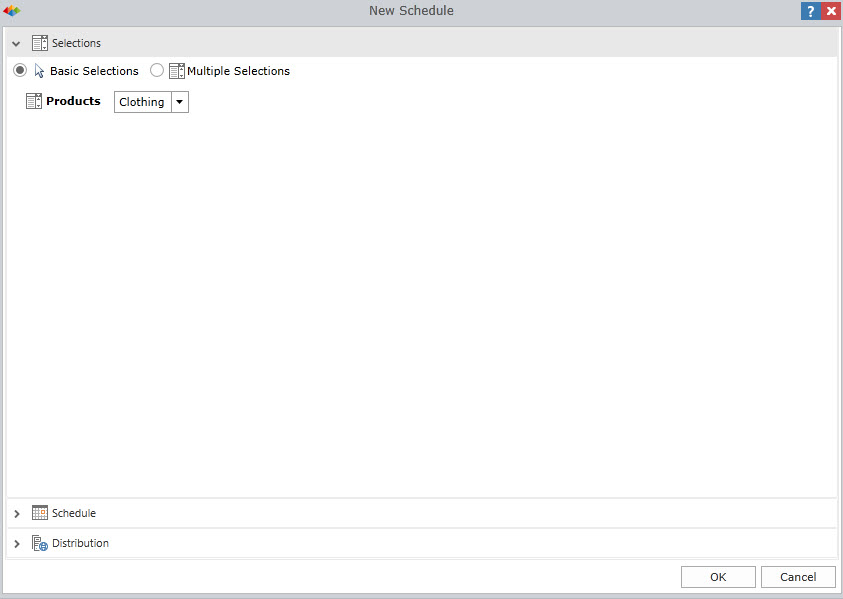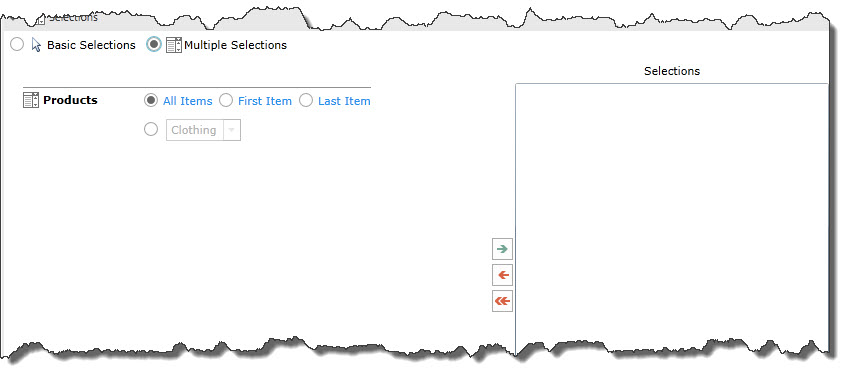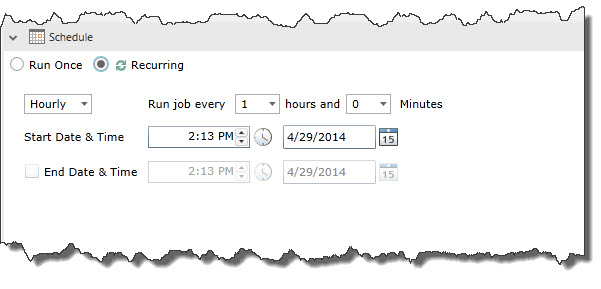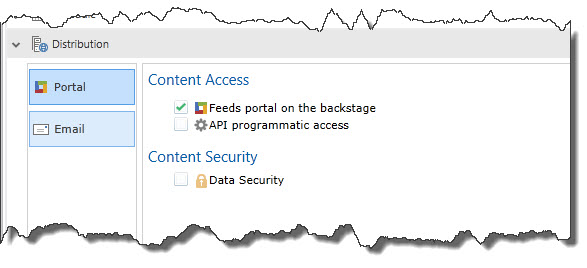Alert Scheduler Interface
Accessing the Alert Schedule Interface
You can access the Alert Schedule Interface once you have opened a new alert, or have selected to edit an already created alert.
Click on the second icon in the "Home" tab.
NOTE: You can view the Alert Schedule Listing from the Advanced User Interface.
Managing the Alert Schedule Interface
There are three panels in an accordion-style format. Click on the arrows to expand or collapse each panel:

Selections
NOTE: The selection panel will only be displayed if you have added slices to the alert template using the Slicer Manager.
Basic Selections: takes the user’s selection for one variation of slice selections to be used in rendering the relevant output of the alert.
Click on the drop-down list of available slices in your alert to run.
NOTE: Basic Selections will only produce one alert per execution.
Multiple Selections: takes the user’s selection for multiple variations of slice selections to be used in rendering the relevant output of the alert.

- Choose from the available drop-down lists to select the slices for your alert to run. There are a few icons to help you manage the selections:
- The green arrow adds a slice variation for alert.
- The red arrow removes a selected slice variation.
- The double red arrow removes all the selected slice variations.
- There are macro-selections available: All items, First Item, and Last Item
NOTE: In these cases, the selections are pulled from the live data at runtime.
WARNING: Any changes to the original template’s Slicer Manager will result in causing the schedule item to be “Inactive”. You can reactivate the scheduled item by editing it.
Schedule
This panel allows you to determine WHEN the alert should be run.

You can choose:
- Run once – the alert will only be rendered once. You can launch the execution immediately or schedule a specific time and date.
- Recurring – the alert will be rendered multiple times based on your selections. When you click on this item, a new interface will be displayed. You can choose to run the alert hourly, daily, weekly or monthly and specify the start data and time as well as the end date and time.
Distribution
The distribution panel controls how the rendered alerts will be delivered to recipients. There are two panels. In the left-hand panel you can select the location for delivery, and the right-hand panel provides the specific details of the delivery.
- Portal
NOTE: The Distribution options available are dependent on the application license.

Portal
If you click on Portal (Feeds page) , you will see three sections (depending on user license):
1. Content Access - you can check off the box for:
- "Feeds" portal on the backstage
- API programmatic Access
2. Content Security - you can check the box of Data Security and a small drop-down list will appear where you can delineate by which slice from the alert the security data will be derived.
3. API
If you click on API within the Portal tab, the alert will be enumerated and listed using the web service API’s for publication into other 3rd party components and tools. Refer to the external API reference documentation for further information.
If you click on Email, you will see:

- You can choose to send emails from the value of a property that is pulled from the data model for the current slice selection for the alert.
- Once you choose the slice, you need to delineate that property whose value will be used to determine the email list.
There are two listings available once you launch a schedule: Alert Job Listing and Alert Listing. The Job Listing displays the list of "jobs executions" of a scheduled alert while the Alerts Listing displays the generated alerts. Then, you can view the Alert Report Summary once the alert has been distributed.
Home |
Table of Contents |
Index |
User Community
Pyramid Analytics © 2011-2022

